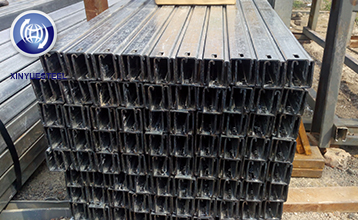Under the dual-carbon goal, the refractory industry's low-carbon transformation, new development and new requirements
Nov. 03, 2021
Looking at the development of the production of refractory materials across the country, it has gradually increased from about 74,000 tons in 1949 to a peak of 29,496,900 tons in 2011. The peak plateau period was in 2012 and 2013, and it dropped to about 28 million tons in 2014. In 2017, the lowest in recent years was about 23 million tons, and it fluctuated around 24 million tons in the past three years. Excluding infrastructure and exports, the total amount of domestic expendable refractories has been on the decline since 2011. In 2020, the total amount of expendable refractories in the iron and steel industry has dropped to about 14 million tons, plus the total amount of refractory materials consumed by cement, glass, ceramics, non-ferrous metals, coal chemical industries and other industries is about 20 million tons. It can be considered that China's refractory industry as a whole achieved its carbon peak in 2011. In the past ten years, the output of demand-side industries (steel, cement, nonferrous metals, etc.) has increased rapidly, but the total amount of refractory materials consumed has not increased but decreased, indicating that China's refractory industry has made significant progress.

Although the refractory industry as a whole achieved a carbon peak in 2011, for a certain company, especially through expansion or restructuring, the total amount of energy consumption and CO2 emissions may still be increasing. , The carbon peak has not yet been achieved. Therefore, first, the industry must continue to work hard to transform to low-carbon development, and strive to achieve the industry's carbon neutral goal earlier by 2060. The specific year, how to achieve it, and the approximate output of the corresponding refractory materials need to be studied in depth by the whole industry, and the timetable, road map, and construction map of the carbon neutral target should be worked out as soon as possible, and we should work hard for it; Second, relevant companies should research and put forward their own carbon peak and carbon neutral target development plans as soon as possible.
Refractory materials are developed with the development of high-temperature industries such as steel. Energy-intensive and high-carbon emission industries such as steel, cement, glass, ceramics, nonferrous metals, and coal chemical industries are the main demand-side users of the refractory industry, and they are also the main focus of carbon neutrality in the industrial sector. The low-carbon transformation and development of these industries until they achieve the carbon neutral goal and then enter the zero-carbon development stage. This process and the refractory industry's own requirements for achieving the carbon neutral goal will have a major impact on the new development of the refractory industry. Bring a revolutionary change in industrial technology. Taking the steel industry as an example, reducing the total production capacity and total output of crude steel and increasing the proportion of electric furnace steel may be important measures to ultimately achieve the goal of carbon neutrality, and at the same time, new low-carbon metallurgical technologies will be adopted. First, the total output of crude steel may gradually decline and increase the proportion of electric furnace short-process steel production and reduce the proportion of blast furnace long-process steel production, and the total amount of refractory consumption will be greatly reduced. The second is that the country strictly controls the “two highs” projects, and the use of refractory materials for infrastructure construction will be greatly reduced; the third is that new low-carbon green metallurgical technologies will put forward new requirements for refractory materials; the fourth is that the steel industry may achieve carbon neutrality in the process Low-carbon emission requirements will be continuously put forward for the refractory general contracting process, or low-carbon strength refractory products will be given priority, and carbon emission intensity indicators of the products will be required. In addition, the country may impose an export carbon surcharge on energy-intensive and high-carbon emission products to restrict the export of energy-intensive and high-carbon emission products. At the same time, foreign countries such as the European Union have proposed to impose carbon tariffs on imported products from 2026. Therefore, in order to adapt to and meet the new development requirements of the new development stage, the refractory industry should continue to deepen the supply-side structural reform and take the following specific measures: eliminate outdated technology and equipment, control production capacity and reduce output, increase concentration, energy conservation and environmental protection , Optimize the industrial layout, coordinate research and development and application of low-carbon and zero-carbon manufacturing innovation technology, formulate low-carbon and zero-carbon product standards, etc.



